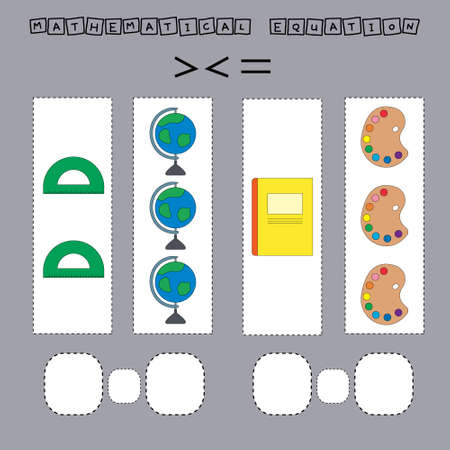Introduction to Feng Shui in the UK Context
Feng Shui, the ancient Chinese art of harmonising individuals with their surrounding environment, has steadily woven itself into the fabric of British domestic life. Traditionally rooted in Eastern philosophies, Feng Shui is concerned with optimising the flow of energy—known as “qi”—to foster well-being, prosperity, and balance within a home. In recent years, this practice has gained notable popularity throughout the United Kingdom, with an increasing number of homeowners seeking to infuse their living spaces with tranquillity and positive energy. As British society becomes more globally connected and open to diverse cultural influences, adapting these time-honoured principles to suit British architecture and lifestyles is both a practical and meaningful endeavour. Whether it is a Victorian terrace in London or a countryside cottage in Yorkshire, the challenge lies in respectfully integrating the wisdom of Feng Shui with the distinctiveness of UK homes, ensuring that its benefits resonate within a uniquely British context.
2. Understanding the Bagua Map Method
The Bagua Map, a foundational tool in Feng Shui, offers a simplified and accessible way for UK homeowners to interpret and improve the energy flow within their residences. Unlike the Compass School, which relies on precise compass readings and cardinal directions, the Bagua Map is applied by aligning its fixed grid to the main entrance of a property, making it particularly adaptable to the diverse and sometimes irregular layouts seen in British homes.
Bagua Map Interpretation: Bridging Tradition and Local Architecture
In practice, the Bagua Map divides any given space—be it a Victorian terrace, Edwardian semi-detached, or a modern London flat—into nine distinct zones, each corresponding to key life areas such as wealth, health, and relationships. While traditional Chinese architecture often features square or rectangular rooms, UK properties are known for alcoves, bay windows, and quirky floorplans. Herein lies the Bagua Map’s flexibility: instead of forcing conformity, it encourages adaptation by overlaying its grid regardless of architectural idiosyncrasies.
Typical Application in UK Homes
| Bagua Area | Associated Life Aspect | Practical Adaptation in UK Residences |
|---|---|---|
| Wealth (Xun) | Prosperity & Abundance | Utilise alcoves with plants or decorative objects; highlight with subtle gold accents |
| Health (Zhen) | Family & Wellbeing | Create a family photo gallery on stairways or landings |
| Career (Kan) | Life Path & Work | Place a mirror or artwork near narrow entryways typical of period homes |
Navigating British Layouts
The beauty of the Bagua Map in a UK context lies in its ability to accommodate both symmetrical Georgian townhouses and eclectic post-war builds. For example, if a home’s main entrance opens into a hallway rather than directly into living spaces—a common feature across many British homes—the Bagua can still be mapped from this point. It is this adaptability that allows residents to harmonise Feng Shui principles with cherished local design features such as fireplaces, sash windows, and even nooks under the stairs.
Ultimately, the Bagua Map approach empowers UK homeowners to identify opportunities for energetic enhancement within their unique living environments without compromising on architectural heritage or contemporary style.

3. The Compass School Approach
The Compass School, or “Luo Pan” method, stands as one of the most traditional and widely respected approaches within classical Feng Shui. In contrast to the Bagua Map’s static grid, the Compass School centres its practice on the nuanced use of cardinal directions—North, East, South, West—and their intermediate points. This technique is particularly meaningful for UK residences, where historical architecture and unique urban layouts add complexity to spatial analysis.
Understanding Cardinal Directions in Feng Shui
The foundation of the Compass School lies in mapping out how a building is oriented relative to true North and its surrounding environment. Each direction is believed to govern specific energies that influence occupants’ prosperity, health, relationships, and more. For example, the South sector often represents recognition and fame, while the North governs career prospects—a nuance that can be especially relevant for UK professionals keen on balancing tradition with contemporary ambition.
Using a Compass: A Practical Guide for UK Homes
To implement this method effectively, UK homeowners and renters are encouraged to invest in a reliable compass—either an analogue model or a digital compass app calibrated for local magnetic declination. Stand at your property’s main entrance; hold the compass flat and steady at waist height. Note the direction the main door faces: this orientation becomes the anchor point for all further Feng Shui assessments. It’s important in Britain to account for magnetic variation, which can subtly shift readings depending on your location from Cornwall to Scotland.
Applying Directional Analysis to British Residences
Once you have established your property’s facing direction, overlay the classic Luo Pan template onto your floor plan. This enables you to pinpoint which rooms or areas correspond with each cardinal sector. For instance, if your living room falls within the East sector, you might enhance it with elements associated with wood and growth—choices that harmonise beautifully with both historic Edwardian terraces and modern London flats. The Compass School thus provides a tailored navigational tool for infusing UK homes with harmony, rooted in both ancient wisdom and present-day practicality.
4. Comparing the Two Approaches
When applying both the Bagua Map and Compass methods to UK residences—whether Victorian terraces, Edwardian semis, or modern city flats—it becomes essential to weigh their respective strengths, limitations, and suitability within a British cultural context. Below is a balanced analysis highlighting key aspects of each approach as they pertain to typical British homes.
Strengths and Limitations
| Bagua Map Method | Compass Method | |
|---|---|---|
| Strengths | Intuitive; easy to overlay on floor plans; accessible for beginners; aligns well with the symmetrical layouts of many British terraced and semi-detached houses. | Highly personalised; considers external factors like surrounding environment and magnetic orientation; can offer more tailored advice for unique plot shapes or older properties with irregular layouts. |
| Limitations | May oversimplify complex structures; less effective in non-traditional layouts (e.g., converted flats or quirky London mews); relies on the main entrance, which may not be the primary access point in UK homes. | Requires accurate compass readings—problematic in dense urban areas with interference; can be confusing for those new to feng shui; potentially at odds with the organic evolution of British interiors. |
Cultural Fit in British Homes
The Bagua Map’s straightforward application tends to resonate with British sensibilities, particularly where clarity and order are prized. Its “one size fits all” grid suits the repetitive, uniform nature of terrace rows or council estates. However, its reliance on a single entry point may challenge properties with multiple doors or shared entrances—common in maisonettes and period conversions.
The Compass Method, meanwhile, offers a nuanced response to Britain’s diverse housing stock. For example, it can adapt to Georgian homes oriented according to historic street patterns or countryside cottages built without regard for modern grids. Yet, its complexity may feel overly prescriptive for those accustomed to a more relaxed, eclectic approach to home design—a hallmark of British interior style.
Summary Table: Suitability for UK Residences
| Approach | Best Suited For | Potential Challenges |
|---|---|---|
| Bagua Map | Semi-detached houses, standard flats, traditional terraces | Multiple entrances, irregular conversions, communal access areas |
| Compass Method | Detached houses, rural cottages, bespoke renovations | Navigating listed buildings’ restrictions, compass interference in cities |
A Balanced Perspective for Modern Britain
No single method universally outshines the other within the UK context. Instead, discerning homeowners often blend elements from both systems: using the Bagua for initial layout inspiration and the Compass for fine-tuning personal spaces. This hybrid approach reflects Britain’s own ability to marry tradition with innovation—a true testament to its ever-evolving domestic landscape.
5. Cultural Nuances and British Home Design
When considering the application of Feng Shui within UK residences, particularly through the lens of the Bagua Map and Compass methods, it is crucial to reflect on the unique architectural heritage that defines British homes.
Victorian Terraced Houses: A Linear Challenge
Victorian terraced houses, emblematic of British cityscapes, are often long, narrow, and arranged in rows. This linearity presents a distinct challenge for traditional Feng Shui, which frequently assumes square or rectangular floor plans when overlaying the Bagua Map. The segmentation of rooms and the presence of extended corridors can disrupt energy flow (or “qi”), requiring creative adaptations such as the use of mirrors to redirect movement or strategic placement of plants to soften harsh lines.
Georgian Townhouses: Symmetry Meets Symbolism
In contrast, Georgian townhouses are celebrated for their symmetry and balanced proportions—qualities that resonate with Feng Shui’s emphasis on harmony and equilibrium. These homes often feature central hallways and evenly spaced windows, facilitating natural light and encouraging a more even distribution of energy. Applying either the Bagua or Compass method in such settings can be straightforward; however, British decorative traditions—like ornate fireplaces or bay windows—may serve as focal points that subtly shift energy patterns, necessitating tailored adjustments to standard Feng Shui advice.
Integration Over Imitation
The key to harmonising Feng Shui principles with British architecture lies in respecting both traditions. It is not about imposing Eastern methodologies wholesale but rather interpreting them through a local lens. For example, while the Compass school prioritises precise orientation, many older UK homes were constructed without regard to cardinal directions; thus, practitioners may need to rely on interior features or historical layouts instead.
The Modern British Context
Ultimately, navigating between the Bagua Map and Compass approaches within a UK context calls for sensitivity to cultural nuances. Whether one resides in a compact Victorian terrace or a stately Georgian townhouse, successful integration involves blending time-honoured British design elements with mindful adaptations from Feng Shui—ensuring both heritage and harmony are thoughtfully preserved.
6. Practical Tips for UK Residents
Blending Feng Shui with British Lifestyles
Successfully applying Feng Shui in the UK requires a thoughtful blend of tradition and local sensibility. While the Bagua Map and Compass methods offer different approaches, both can be adapted to suit British homes—be they Victorian terraces, modern flats, or countryside cottages. Consider using the Bagua Map aligned with your home’s main entrance for simplicity, especially in period properties where architectural quirks abound. If you favour precision, use the compass method to map out energy directions, but adjust for the UK’s unique floor plans and irregular layouts.
Actionable Steps for Homeowners and Renters
Start with a Clear-Out
Decluttering is central to both Feng Shui and British sensibilities of neatness and order. Begin by removing unnecessary items from hallways and communal spaces to allow positive energy—or qi—to flow freely. This resonates well with the classic British love for tidy, welcoming homes.
Respect Local Architecture
Work with your home’s natural features rather than against them. If you live in a listed building or rental property where structural changes are limited, focus on moveable elements: arrange furniture to encourage conversation and comfort, use mirrors to reflect light into darker corners, and choose soft furnishings that evoke calm without clashing with period details.
Use Colour Thoughtfully
Choose colours that harmonise with both Feng Shui principles and traditional British palettes—think soothing greens for health, gentle blues for calm, or warm earth tones for stability. Use these accents in accessories, artwork, or even fresh flowers to bring balance without overwhelming your space.
Bring Nature Indoors
Incorporate houseplants such as English ivy or peace lilies to enhance air quality and vitality. Displaying seasonal blooms—a beloved British tradition—also aligns with Feng Shui’s emphasis on living energy and renewal.
Sensitive Placement of Symbols
If you wish to use traditional Feng Shui symbols like fountains or crystals, do so discreetly and tastefully. Opt for subtle placements that complement your décor; perhaps a small water feature in the hallway or a crystal bowl on a mantelpiece. The goal is harmony, not pastiche.
Aesthetic Balance Above All
Ultimately, let your personal tastes guide you within the framework of Feng Shui. A well-curated bookshelf, a comfortable reading nook, or a gallery wall of family photos can all foster positive energy if arranged with intention. By respecting both the ancient wisdom of Feng Shui and the nuances of British living, you can create a home that feels balanced, inviting, and uniquely yours.


